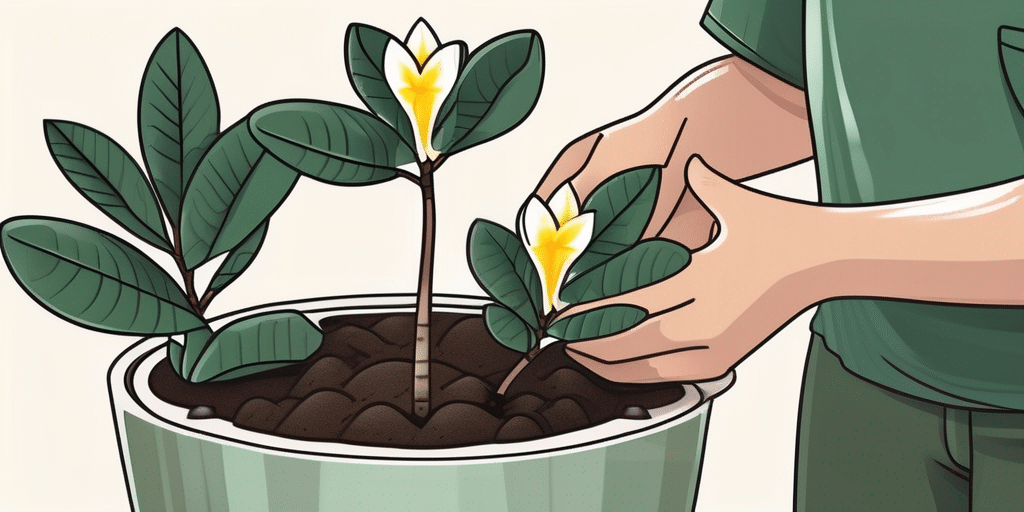Known for its vibrant blooms and unique appearance, the crown of thorns plant is a popular choice for indoor and outdoor gardens. However, to keep this plant thriving, it requires specific care and attention. This guide will provide you with comprehensive information on how to properly care for your crown of thorns plant.
Understanding the Crown of Thorns Plant
The crown of thorns plant, scientifically known as Euphorbia milii, is a succulent plant species from the spurge family. It’s native to Madagascar and is well-known for its thorny stems and beautiful, petal-like bracts which come in a variety of colors.
As a succulent, the crown of thorns plant is drought-tolerant and can survive in less-than-ideal conditions. However, to truly thrive and produce its characteristic colorful blooms, it needs specific care.
Characteristics of the Crown of Thorns Plant
The crown of thorns plant is a woody, spiny, and succulent shrub. It can grow up to 6 feet tall in the wild, but when cultivated as a houseplant, it usually stays between 1 to 2 feet tall.
The plant’s most distinctive feature is its sharp, grey thorns that cover the plant’s stems, giving it its common name. Its leaves are found mainly on new growth and are typically obovate and bright green in color.
Flowering of the Crown of Thorns Plant
The crown of thorns plant produces small, inconspicuous flowers surrounded by showy, petal-like bracts. These bracts come in a variety of colors, including red, pink, and white, and can bloom all year round under the right conditions.
Interestingly, the actual flowers of the plant are tiny and located in the center of these bracts. This is a common characteristic of plants in the Euphorbia genus.
How to Care for Your Crown of Thorns Plant
Proper care for your crown of thorns plant involves understanding its needs in terms of light, water, soil, and temperature. Here are some guidelines to help you provide the best care for your plant.
Light Requirements
The crown of thorns plant thrives in bright light. It can tolerate full sun to partial shade, but for the best flowering results, it should receive at least 3 to 4 hours of direct sunlight each day.
If you’re growing your plant indoors, place it near a south or west-facing window. If the light is too intense, you can diffuse it with a sheer curtain.
Watering Your Plant
As a succulent, the crown of thorns plant is adapted to survive in dry conditions. It’s important to avoid overwatering, as this can lead to root rot, a common problem with succulent plants.
Water your plant thoroughly, then allow the top inch of soil to dry out before watering again. During the winter months, when the plant is not actively growing, reduce watering to once a month.
Soil and Fertilizer Requirements
The crown of thorns plant prefers well-draining soil. A commercial succulent or cactus mix is ideal. If you prefer to make your own mix, combine equal parts of sand, peat moss, and perlite.
During the growing season, feed your plant with a balanced, water-soluble fertilizer every two weeks. Reduce feeding to once a month during the winter.
Temperature and Humidity
The crown of thorns plant is a tropical plant and prefers warm temperatures. It can tolerate temperatures as low as 50°F (10°C), but it’s best to keep it in an environment where temperatures range between 60°F (15°C) and 85°F (29°C).
Humidity is not a significant concern for this plant. It can tolerate dry indoor air, but it’s important to ensure it’s not exposed to drafts or sudden temperature changes.
Common Problems and Solutions
Like any plant, the crown of thorns can encounter a few problems. Here are some common issues and how to address them.
Yellowing Leaves
Yellowing leaves can be a sign of overwatering. Check the soil’s moisture level, and if it’s too wet, allow it to dry out before watering again. If the problem persists, you may need to repot the plant in fresh, well-draining soil.
Pests
The crown of thorns plant can be susceptible to pests like mealybugs and spider mites. If you notice small, cotton-like spots or fine webbing on your plant, treat it with an insecticidal soap or neem oil.
Failure to Bloom
If your crown of thorns plant is not blooming, it may not be receiving enough light. Move your plant to a brighter location, ensuring it receives several hours of direct sunlight each day.
Propagating the Crown of Thorns Plant
Propagating the crown of thorns plant is relatively straightforward and can be done through stem cuttings. Here’s a step-by-step guide:
- Cut a stem from the mother plant using a clean, sharp knife.
- Allow the cutting to dry for a few days until a callus forms over the cut end.
- Plant the cutting in a pot filled with well-draining soil.
- Water lightly and place the pot in a bright, warm location.
- Wait for the cutting to root, which should take about 2 to 3 weeks.
Remember to handle the plant with care during the propagation process, as the sap can be irritating to the skin and eyes.
Conclusion
With its striking appearance and vibrant blooms, the crown of thorns plant makes a unique addition to any garden. By understanding its specific care requirements and addressing any potential issues promptly, you can enjoy the beauty of this plant for many years to come.
Join Our Gardening Community
Ready to turn your crown of thorns plant into the jewel of your garden? Subscribe for free to How to Grow Everything and get tailored gardening advice that will help you nurture not just your crown of thorns, but your entire garden. Learn how to build the garden of your dreams with tips and deals specifically chosen for your location and experience level. Join our family of garden enthusiasts and watch your green space flourish!





